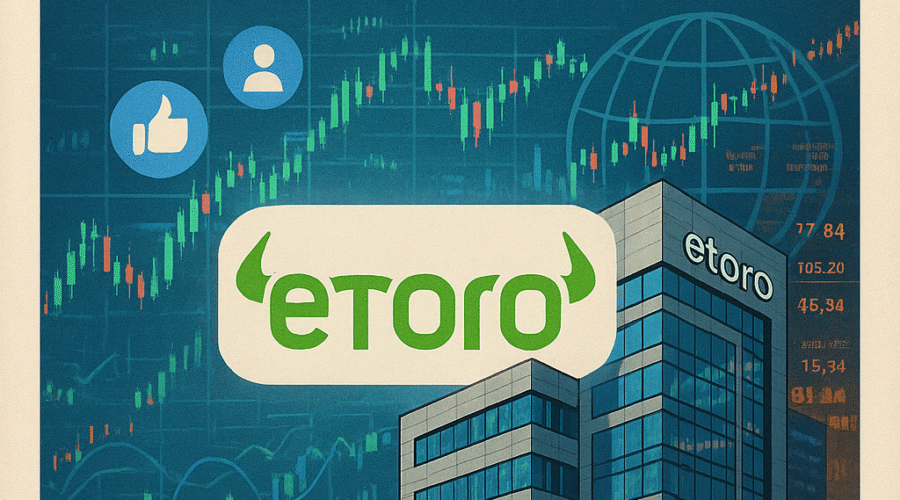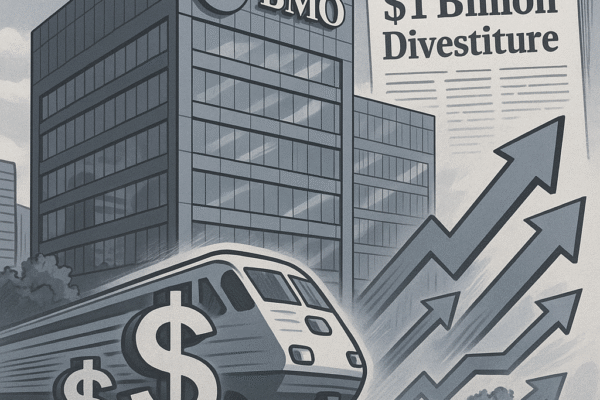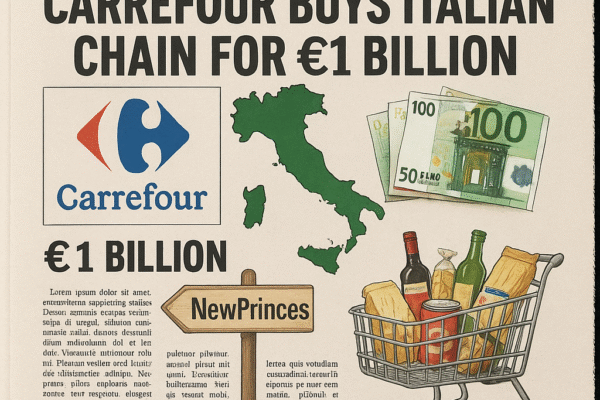As global markets show tentative signs of recovery from a prolonged IPO drought, Israeli social trading platform eToro Group Ltd. has launched a $480 million initial public offering that could redefine investor appetite for fintech innovations[1][4]. The Skadden Arps Slate Meagher & Flom-led offering, priced at $46-$50 per share with Nasdaq listing under ticker “ETOR,” arrives amid resurgent retail trading activity and regulatory shifts reshaping cryptocurrency markets[1][3][4]. This deep-dive analysis examines the deal’s architecture, eToro’s journey from SPAC merger to public debut, and implications for the evolving intersection of social media and investment platforms.
Deal Architecture and Market Positioning
Pricing Strategy and Share Allocation
The 10 million share offering split evenly between primary and secondary shares creates a deliberate supply constraint that could fuel post-IPO momentum[1]. With Goldman Sachs and Citigroup anchoring a 14-bank syndicate, the pricing range implies a fully diluted valuation between $9.8 billion and $10.6 billion – a 15% premium to its 2021 SPAC merger valuation[3][4]. The structure allows early backers like China Minsheng Financial and SoftBank Vision Fund 2 to partially exit while retaining 78% post-IPO control, aligning with recent tech IPO trends favoring founder continuity[3][5].
Comparative Market Analysis
| Company | IPO Size | Valuation | Key Differentiator |
|---|---|---|---|
| eToro | $480M | $10.4B | Social trading network |
| Robinhood (2021) | $2.1B | $32B | Commission-free model |
| Coinbase (2021) | $86B (direct listing) | $86B | Pure-play crypto exchange |
This positioning allows eToro to capitalize on renewed interest in crypto assets without overexposing investors to regulatory risks plaguing pure-play exchanges[4][6]. The platform’s 2025 Q1 metrics – 27 million users and $12.6 billion annualized revenue – suggest 18% user growth and 210% revenue expansion since its failed 2021 public debut[2][3][4].
Legal and Regulatory Considerations
Skadden’s Dual Role in SPAC and Traditional IPO
Skadden’s continued representation through eToro’s 2021 SPAC merger and current IPO provides rare continuity in a sector marked by regulatory flux[3][4]. The firm’s simultaneous advisory work for FinTech Acquisition Corp. V and eToro during the $10.4 billion SPAC deal established crucial precedents for social trading platforms navigating SEC scrutiny on user-generated content liability[3][4]. Recent amendments to Regulation Best Interest (BI) and the Marketing Rule create both challenges and opportunities for eToro’s copy-trading features, which Skadden has preemptively addressed through platform architecture changes[4][6].
Cryptocurrency Compliance Framework
With 38% of 2025 Q1 revenue derived from crypto assets, eToro’s success hinges on balancing innovation with evolving global regulations[4][6]. The platform’s decision to delist privacy coins in 2023 while expanding staking services aligns with FINRA’s recent guidance on proof-of-stake assets[4][6]. However, ongoing investigations into Block’s Cash App and recent FinCEN actions against Cambodian crypto launderers underscore persistent AML risks that could impact payment routing partners[4][6].
Market Impact and Competitive Landscape
Retail Trading Platform Consolidation
The IPO arrives amid tectonic shifts in retail investing infrastructure. Charles Schwab’s acquisition of TD Ameritrade and Morgan Stanley’s E*TRADE purchase created legacy platform behemoths, while Web3-native entrants like eToro and Public.com carve niches through social features[4][6]. eToro’s patent portfolio around sentiment analysis algorithms (filed 2022-2024) positions it to monetize behavioral data – a differentiator as regulators clamp down on payment-for-order-flow models[4][6].
Institutional Adoption of Social Trading
Contrary to its retail-focused branding, eToro has quietly built institutional offerings accounting for 22% of 2024 revenue[4]. The platform’s API integration with Bloomberg Terminals and partnership with BlackRock’s Aladdin platform signal maturation into a multi-sided marketplace[4][6]. This evolution mirrors Fidelity’s integration of social sentiment indicators into its active trading platforms, suggesting convergence between traditional and fintech brokerage models.
Financial Engineering and Valuation Considerations
Revenue Diversification Strategy
eToro’s 2025 revenue mix demonstrates deliberate de-risking from its crypto-heavy past:
| Segment | 2021 | 2025 |
|---|---|---|
| Crypto Trading | 68% | 38% |
| Equities/ETFs | 19% | 34% |
| Subscription Services | 8% | 18% |
| Data Licensing | 5% | 10% |
This shift towards recurring revenue streams helped secure participation from Wellington Management and Fidelity in the IPO’s anchor tranche[3][4]. The platform’s “CopyPortfolios” product – algorithmically managed theme baskets – now manages $4.2 billion in AUM with 0.75% average management fees[4].
Synergy Potential with Traditional Finance
Goldman Sachs’ dual role as lead underwriter and strategic partner (via Marcus Invest integration) hints at white-labeling opportunities for eToro’s social trading infrastructure[1][4]. The platform’s 2024 acquisition of AI analytics firm Sentimer Technologies provides cross-selling potential into wealth management divisions seeking Gen Z engagement tools[4][6].
Risk Factors and Mitigation Strategies
Regulatory Overhang on Social Trading Features
The SEC’s ongoing review of “gamification” in trading apps poses particular risks to eToro’s achievement badge system and virtual portfolio competitions[4][6]. However, the company’s early adoption of FINRA-compliant disclaimer protocols and partnership with SIFMA on investor education initiatives provide regulatory air cover[4][6].
Crypto Volatility and Stablecoin Scrutiny
With Tether (USDT) accounting for 62% of crypto trading volume, potential stablecoin regulation could disrupt settlement flows[4][6]. eToro’s development of a proprietary settlement token with Circle’s USDC infrastructure and NYDFS approval mitigates this exposure while positioning the platform as a regulated alternative to offshore exchanges[4][6].
Conclusion: Redefining Social Finance Infrastructure
eToro’s public debut represents more than a liquidity event – it validates social trading as a durable paradigm in digital finance. The company’s ability to navigate post-SPAC restructuring while tripling revenue demonstrates operational maturity uncommon among fintech unicorns[2][3][4]. As traditional brokers scramble to integrate social features and crypto natives face regulatory headwinds, eToro’s hybrid model offers a blueprint for platform evolution in the Web3 era. Success will hinge on maintaining compliance velocity while scaling the network effects that made its 20 million users not just customers, but content creators in a self-reinforcing financial ecosystem.
Sources
https://www.etoro.com/en-us/news-and-analysis/latest-news/press-release/etoro-announces-launch-of-initial-public-offering/, https://www.law360.com/articles/2315065/skadden-latham-lead-crypto-platform-etoro-s-ipo-filing, https://roboticslawjournal.com/news/skadden-and-morgan-lewis-advise-on-etoro-spac-merger-1982627750, https://www.law360.com/assetmanagement, https://globalventuring.com/israel-10-years-on-what-is-the-status-of-the-startup-nation/, https://muckrack.com/tomzanki, https://psv4.userapi.com/s/v1/d/aokBSP2tIORc-ONl6daFsuweowvrsH8GVs7kH9bBcrFGPkQ_J1kJZMRwojV0_Qa3wmhb5ywWeaNvOukwTI8E03xg0LHrvGoN0a-ErRuvjznXYKbP/2021-02-27_IFR_Magazine_UserUpload_Net.pdf, https://www.navigatevc.com/insight/the-crunchbase-unicorn-board/





